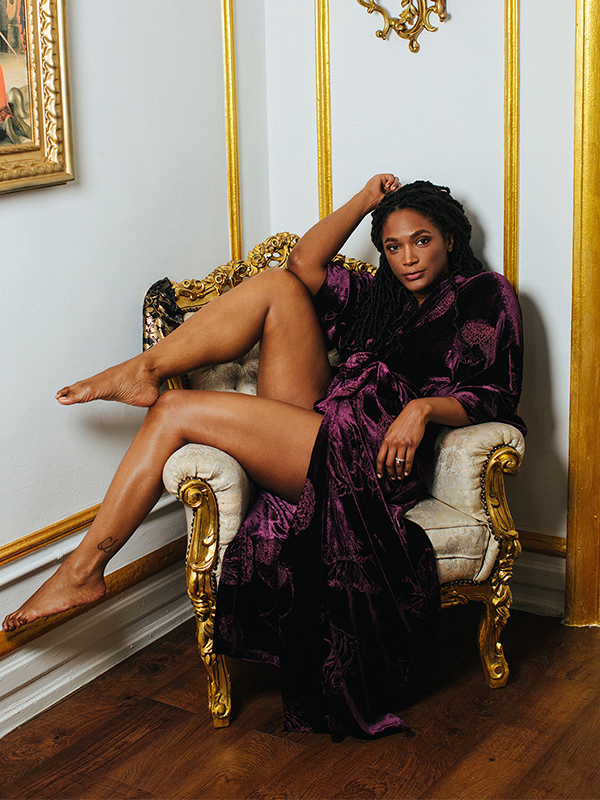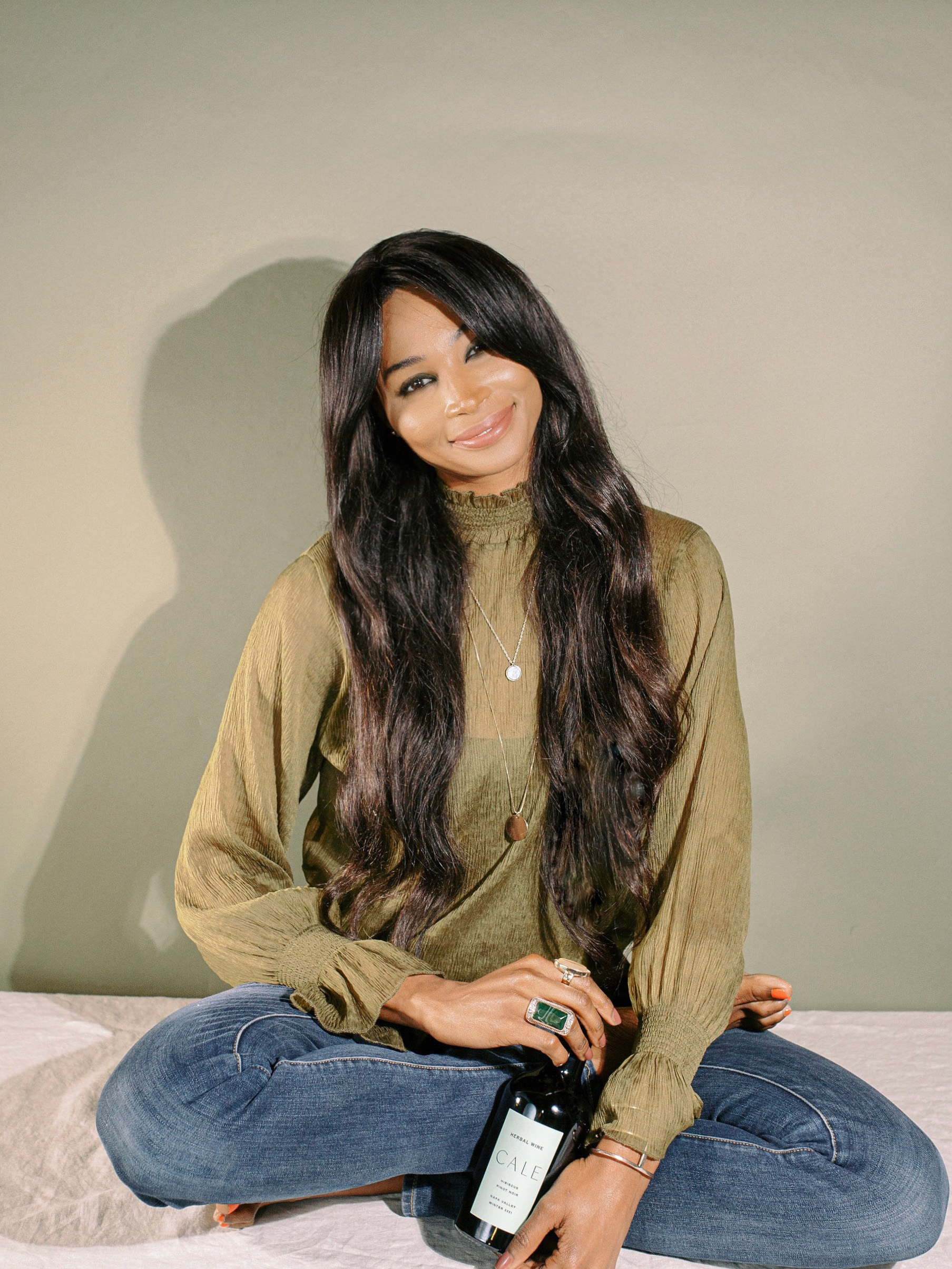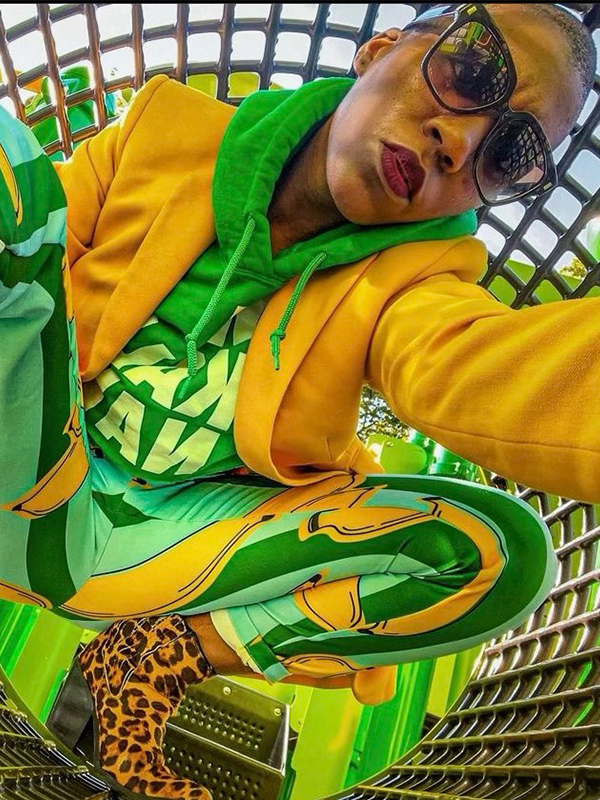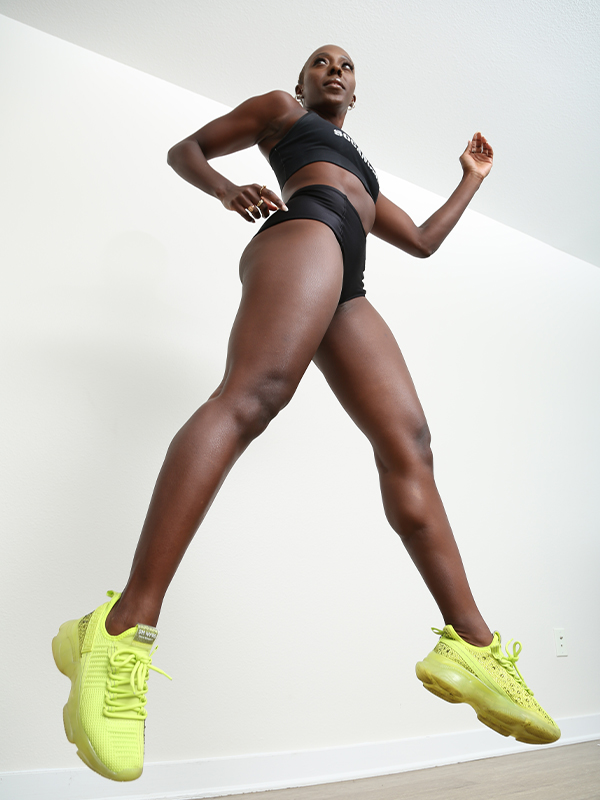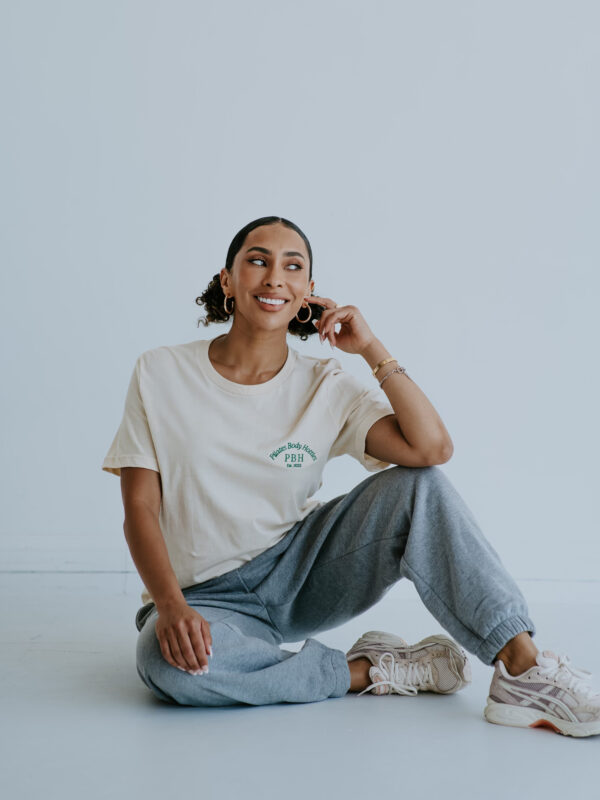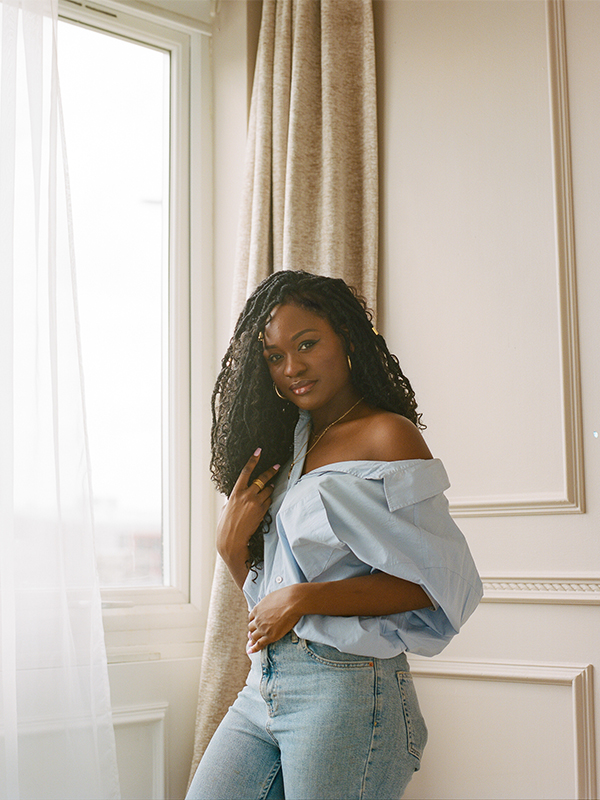Cora Harrington doesn’t shy away from intimate conversations. With her book In Intimate Detail: How to Choose, Wear, and Love Lingerie and her website, The Lingerie Addict, Harrington is dedicated to guiding people—newcomers and longtime lovers of lingerie alike—through the fascinating world of intimate apparel.
“I want people to have access to information,” Harrington tells Sweet July. “It’s so exciting when people go to the site and come away saying ‘I never heard about this brand,’ or ‘I never knew that this kind of lingerie came in my size.’
As a Black queer woman, she’s helping to ensure that the intimate apparel industry steadily becomes more inclusive. Her voice and style are distinctive and authoritative; her commentary on intimate apparel weaves in topics from artistic philosophy to labor advocacy to world history. And perhaps above all, Harrington advocates for a more pleasurable way of consuming fashion, a way that recognizes that each piece we buy has been painstakingly created, and a way that calls for us to treat our closets as curated art collections.
We chatted with Harrington about inclusivity in the intimate apparel industry, how lingerie reflects complex issues in our society and why representation is a priceless artistic resource.
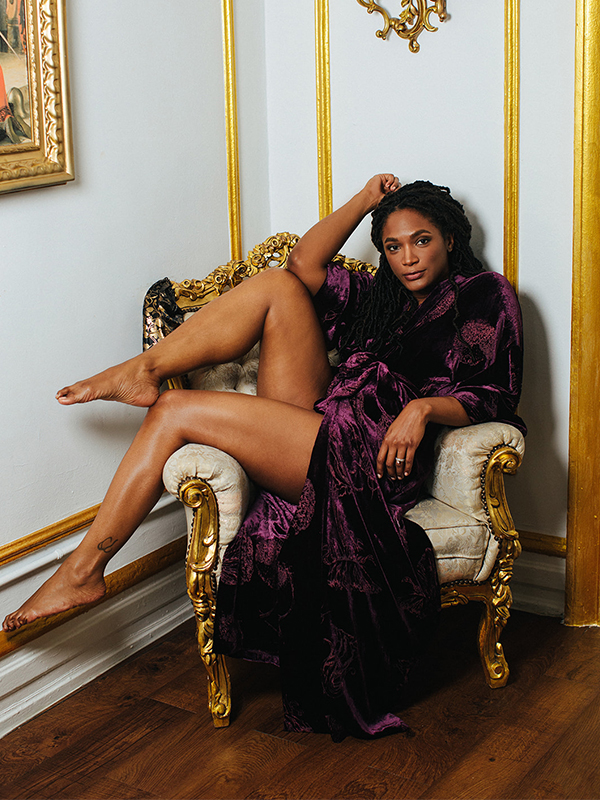
Why do you love intimate apparel?
Cora Harrington: When I started, my feelings about intimate apparel were very centered around newness and novelty, like ‘Here’s this new collection I love!’ I still enjoy seeing new pieces and new lines, but a lot of my interest in intimate apparel is now connected to culture, history and society. What does lingerie mean for this world we live in?
What specific piece of lingerie can you remember first sparking a sense of fascination in this art form for you?
CH: I remember exactly. They were these Falke peacock welt stockings. Growing up in the south, you wear tights and pantyhose to church, or when you’re dressing up for job interviews. When I was younger, I had never seen thigh-highs so pretty. They looked like jewelry for the legs; green and blue and gold. Then, later on, I encountered this bra called Sirena by Kiss Me Deadly, in kind of similar peacock tones. It was a balconette cut that really gave you that cakes-on-a-plate effect that made your boobs look like ‘Here I am.’ It was one of my first luxury purchases that was not an everyday bra.
What are some of your favorite books on your bookshelf?
CH: How To Read a Dress by Lydia Edwards. It breaks down different fashion time periods, which is nice if you’re new to fashion history or want to identify silhouettes by era. The Corset: A Cultural History by Valerie Steele, who’s now the curator at the Museum at the Fashion Institute of Technology, is also one of my favorites. She unpacked a lot of the myths around the corset, like this idea that it was oppressive and restrictive and women were dying all over the place from tight lacing.
What have been some of the most insightful things that you have learned about society through the lens of intimate apparel?
CH: One of the biggest revelations was learning that bras are made by people sitting behind sewing machines and stitching dozens of pieces together. I think a lot of people look at it like ‘Well, it’s just a little bit of fabric and lace. So it can’t be that hard.’ But smaller things are often more difficult to sew. It really made me reassess not just the amount of skill and labor that goes into what we wear, but the conversations we have around the people making those things and our expectations for how those people should be paid or how we should think about their labor. What does it mean if you go to a store and you see a bra that costs $5 versus a bra that costs $50?
Why is it so important for the intimate apparel industry to support small, women-owned, and Black-owned businesses?
CH: There’s the selfless answer, right? Which is that you want to support diversity in the industry, you want to support marginalized groups, you want to buy Black and you want to buy from small businesses because it’s the right thing to do. But I suppose the more selfish reason is that it’s often these indie designers that are at the leading edge of creating the products people want to see in the industry. It’s going to be indie designers like Nubian Skin who are making nudes in a range of skin tones or gender neutral underwear or lingerie with room to accommodate people with external genitalia. When a brand is doing really great things, like Nubian Skin or Love Vera, I keep coming back and featuring them on my site.
Does representation play a big role in the intimate apparel industry?
CH: Yes, especially when it’s not tokenism. In the more traditional intimate apparel industry, a lot of heritage or legacy brands look at Savage X and see that what they’re doing is popular. So then they just add a picture of a Black person. But they don’t understand that Savage X resonated with people because it’s authentic, it’s consistent. And a lot of it is generated from their consumers. The major influence of Savage X is that they’re giving consumers a vision of what the intimate apparel industry can look like, and they’re making consumers question whether these other brands are doing enough. They’re getting people to ask these companies, ‘Why aren’t you doing more?’ Which I think is a very legitimate question.
What’s unique about the experience of being a Black woman in the intimate apparel industry?
CH: I’m really happy to be a Black queer woman in this industry. I carry my identity and who I am into the work I do. It impacts how I talk about intimate apparel, the brands that I try to support and the kind of authors that I’ve tried to bring onto my site. I hope that part of what I’ve done so far, as much as I can with my limited platform and budget, is to offer a vision of what a more inclusive, intimate apparel industry can look like. I frequently talk with brands about bringing in those nude tones, using gender-neutral language, hiring models that are larger or have larger busts, who have darker skin or are more gender-neutral presenting.
I wish there were more Black people and people of color in this industry. There’s not a very strong Indigenous presence. There’s not a very strong Asian presence, at least in the United States. I wish there were more visible LGBTQ people in the industry. So, I try to do what I can to at least help surface some of those voices.
This interview has been edited and condensed for clarity.
